Getting Catty with Paula Poundstone
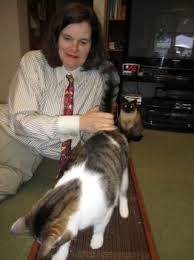 Comedian Paula Poundstone (Wait, Wait...Don't Tell Me!) is back to explain why she's not a "Crazy Cat Lady," despite her menagerie of 14 cats. While there aren't a lot of "sure-things" in this world, Paula is pretty sure she won't be getting her deposit back when she moves out.
Comedian Paula Poundstone (Wait, Wait...Don't Tell Me!) is back to explain why she's not a "Crazy Cat Lady," despite her menagerie of 14 cats. While there aren't a lot of "sure-things" in this world, Paula is pretty sure she won't be getting her deposit back when she moves out.
Along with her 14 cats, who rule the roost, Paula also has 2 dogs. She claims that having her two dogs, with all of her cats, makes her an "animal lover not a crazy cat lady." She then "lets the cat out of the bag" and tells us that the dogs are really just "beards" to cover her trail!
The last time we talked to Paula she had a "Kitty Diner Cam" in her kitchen so everyone could watch her cats eat. One cat in particular was a really fat cat with the speculation that it might be suffering from a thyroid problem. But with the diner cam, Paula was able to dispel that idea. The problem was that she was at the bowl all the time. In fact she was the star of the diner cam!
However, because her son is an electronics addict, Paula had to take it down along with the computer that ran it. She mentions that an electronics addiction is a horrible, horrible thing and many adults suffer from it as well. However, in the developing brains of young children, it is a disaster! But now that he has moved out, she will consider putting one back up again.
Does Paula spoil her pets? Of course! She tells us one time she made them some string toys with a picture of Dr. Drew. Paula would drag the toy and let the cats chase it and bite it because he is a low-life and even her cats sensed it.
Paula has no plans to add any more animals and states that one day she would even like to travel. She sees commercials on Television about saving for your retirement, which by the way never occurred to her until recently, with grey haired people walking on beaches, kayaking or canoeing and scuba diving - apparently we get to an age when we take to the water - and she would like to have her turn to do that. But unless she can get her cats to surf, she's stuck where she is.
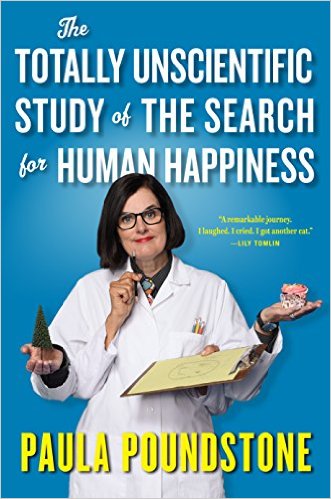 Sadly Paula tells us her bearded dragon past away, but he lived a long life for a bearded dragon. She thinks this in in part of him seeing his reflection in his tank but didn't know he was looking at himself. However, he must have had good self-esteem because he would look at his reflection and puff up his beard, which is a sexual behavior, and must have thought, "Man! That's a good looking lizard!"
Sadly Paula tells us her bearded dragon past away, but he lived a long life for a bearded dragon. She thinks this in in part of him seeing his reflection in his tank but didn't know he was looking at himself. However, he must have had good self-esteem because he would look at his reflection and puff up his beard, which is a sexual behavior, and must have thought, "Man! That's a good looking lizard!"
Does Paula sleep with all of her animals? She says she used to sleep with her cats on the living room floor and loved it, because there is a joy about having a bunch of cats snuggling with you. However, eventually they took to territorial peeing on her. She tells of one time in the morning when the phone rang. When she went to answer it, pee actually dripped out of her ear when she stood up! She didn't know why they did it until a vet told her that it was territorial marking, which was kind of flattering to her, because they were saying to the other cats that, "She's my special someone." However, that was it. Now sleeps in her bedroom (she still doesn't own a bed) and no cats are allowed in the room because they went too far!
Surprisingly, Paula rents her house with all of her animals. Whens she moves, she knows she won't be getting her security deposit back!
One of Comedy Central's Top 100 Comics of All Time, Paula is a popular panelist on NPR's weekly comedy news quiz Wait, Wait…Don't Tell Me! Her second book, The Totally Unscientific Study of the Search for Human Happiness debuts on May 9, 2017, and her new CD, North By Northwest: Paula Poundstone Live! landed atop both Amazon's "Hot New Releases Non Fiction" and "Comedy CD" lists, along with Billboard's "Top Ten Comedy Albums" chart.
Visit Website
Musician Amy Holland Passionate About Adoption
Amy Holland
 The Grammy-nominated singer-songwriter, and wife of Michael McDonald, Amy Holland is our special guest along with her pup, "Tulip." Ladybug The Animal Radio Studio Stunt Dog loves her new album with David Crosby and her hubby. You will too!
The Grammy-nominated singer-songwriter, and wife of Michael McDonald, Amy Holland is our special guest along with her pup, "Tulip." Ladybug The Animal Radio Studio Stunt Dog loves her new album with David Crosby and her hubby. You will too!
Amy Holland is incredibly passionate about animals and a huge supporter of pet adoption. She and her husband Michael McDonald (formerly of the Doobie Brothers and Steely Dan) have two rescue dogs. In fact, during the interview Amy was sitting with her newest member of her family, a dog named Tulip.
Last Christmas Amy lost her 14-year-old Jack Russell and was told that Tulip was also a Jack Russell. Amy wasn't sure about Tulip's breed, so she had a DNA test done. The test results came back with the weirdest combination of dogs, which look nothing like Tulip. Tulip's DNA came back listing her as part Rottweiler, part Bulldog and part Yorkshire Terrier.
Recently people have been telling Amy that Tulip looks like she is part Basenji. Amy looked up Basenji mixed Breeds - and there she was! Basenjis don't bark, but one of their traits is that they do a little "yodeling," which Tulips does.
Along with Tulip, Amy also has another rescued dog, an American Redbone Hound. Amy's daughter is living with them right now, and she has a rescued mixed Golden Retriever. In fact, Amy states that her husband says when their daughter moves out; they are going to sue her for the dog, because they can't bear to part with him!
So do their pets sleep in bed with them? Of course they do! Amy says that Michael is away a lot, so when he comes home and wants to know where he is going to sleep, Amy tells him that he has lost his position. She states it is almost like a race to the bed to see who can claim a space for the night!
Amy doesn't think she is a big spoiler of her pets. She tells us that she never feeds them from the table, but noticed after a friend stayed with them for a while, that her dogs started begging. It turns out their houseguest had been feeding them under the table the whole time.
 Groomer Joey then mentioned the mud baths for dogs and Amy said she could just see Tulip and her at the Spa with cucumbers on their eyes! In fact, anywhere Tulip can go with Amy, she is all over it! Amy takes Tulip with her everywhere she can and is trying to get Tulip more socialized than her other dog. Her other dog would not let any female dog near her or West of the Rio Grande or anywhere near Amy.
Groomer Joey then mentioned the mud baths for dogs and Amy said she could just see Tulip and her at the Spa with cucumbers on their eyes! In fact, anywhere Tulip can go with Amy, she is all over it! Amy takes Tulip with her everywhere she can and is trying to get Tulip more socialized than her other dog. Her other dog would not let any female dog near her or West of the Rio Grande or anywhere near Amy.
Amy came to music organically. She was born in Palisades, New York to very talented parents. Her mom was a star in the 1930s and "40s. Known as Esmereldy, her dad was an opera star on Broadway but needed something more stable when their first child was born. He became a mastering engineer at Mercury Records and was responsible for mastering hits like "Walk Away Renee" and records for Dusty Springfield, Johnny Mathis, the Four Seasons and early Ray Stevens' hits.
Growing up with such strong musical influences led Amy to know by the time she was twelve that music was what she wanted to do the rest of her life. Despite the bumps in the road before, during and between hits, Amy Holland is here to stay and her album Light on My Path allows her vocals and style to shine, proof that talent will always be in demand.
Check out her new album, Light on My Path, which features her husband Michael McDonald along with David Crosby and David Pack (Ambrosia.)
Visit Website
Pheromones In Puppy Training - Dr. Debbie
 So you just got a new puppy and you have all your training tools at the ready, the collar, leash and dog crate. But beyond that, do you have the one thing that can make your training tasks easier all around? Tap into your puppy's own sense of smell using canine pheromones, and ease your new pup's training and transition into the home.
So you just got a new puppy and you have all your training tools at the ready, the collar, leash and dog crate. But beyond that, do you have the one thing that can make your training tasks easier all around? Tap into your puppy's own sense of smell using canine pheromones, and ease your new pup's training and transition into the home.
Pheromones are scent signals emitted by all animal species, including humans. Various pheromones work under the radar to influence the perceptions and behaviors of others within a species.
Shortly after whelping, a pheromone is emitted from the bitch's sebaceous (oil) glands located between the mammary glands. The pheromone, dubbed the canine appeasing pheromone, reassures the puppies, calms them and facilitates nursing. The bitch stops emitting this pheromone as the pups mature, but all dogs retain the ability to "read" this pheromone. Not only do older dogs recognize this pheromone, but it continues to have a natural calming effect on canines of all ages.
In veterinary behavior cases, the dog appeasing pheromone is used for dogs with noise phobias, car travel anxiety, separation anxiety, and other fearful situations. Various forms are available including pheromone collars, plug in diffusers and sprays. The canine appeasing pheromone doesn't sedate the dog; rather it decreases fear and excitability.
The dog appeasing pheromone is also helpful for newly adopted puppies. Those first few days to weeks in a new home are full of changes for the pup faced with novel environments far from the comfort of mother and siblings. The dog appeasing pheromone has been shown to ease the transition of the pup into new home and improve sociability and training during a pup's critical socialization period.
Pheromone Research
For skeptics that need to see the proof in the studies, veterinary behavior studies have examined the positive influence of the dog appeasing pheromone. When comparing treatment responses for dogs with separation anxiety, the use of the dog appeasing pheromone equaled the benefit of the anti-anxiety medication, amitriptyline.
One study looked at 66 puppies as they settled into new homes after adoption. Approximately half of the puppies wore a pheromone collar and half wore a placebo. The study found that puppies wearing a pheromone collar displayed significantly fewer nuisance behaviors like vocalizations or scratching within 3 days of adoption. Pups wearing the pheromone collar woke their owner's less during the night and displayed fewer signs of distress and vocalizations throughout the course of the study.
The researchers concluded that pheromone collars helped both the pup and family. Pups were less stressed and adapted easier. By decreasing the pup's stress and fearful behaviors, the pet owners found a more enjoyable bonding experience with the new pup and faced less frustration through the training process.
 In another study, puppies 8 to 15 weeks were enrolled in an eight-week long puppy socialization and training class. Half wore a pheromone collar and the other half wore a placebo collar. The pups wearing the collar were calmer in the face of novel experiences and displayed less fear, anxiety, and aggression. In the end, the pups with pheromone collar not only were less nervous, but had fewer behavioral problems and learned better. And a long-term effect on sociability was recognized in dogs up to one year after the class and study was completed.
In another study, puppies 8 to 15 weeks were enrolled in an eight-week long puppy socialization and training class. Half wore a pheromone collar and the other half wore a placebo collar. The pups wearing the collar were calmer in the face of novel experiences and displayed less fear, anxiety, and aggression. In the end, the pups with pheromone collar not only were less nervous, but had fewer behavioral problems and learned better. And a long-term effect on sociability was recognized in dogs up to one year after the class and study was completed.
Pheromones and My Pup
As the new owner of a nine-week old Bouvier puppy named Nikki, I used both the pheromone collar and diffuser upon welcoming my new pup home. One day before bringing Nikki home, I placed a pheromone diffuser close to the puppy crate, where it would have maximum benefit during her first nights in the kennel away from mother and siblings. Immediately upon leaving the breeder's home, Nikki was fitted with a pheromone collar to serve as a source of reassuring pheromones that went everywhere she did. The pheromone collar has become a tool in Nikki's socialization. It's on her when she meets new people or animals, when she explores new environments, and during puppy kindergarten class.
Did pheromones help in my pup's transition and training? The four hour drive home from the breeders was a dream, no crying or whining the entire trip. Now three weeks later from acquiring my pup, and Nikki never soiled in her kennel during the day or night. I'll admit I had my share of interrupted sleep in the first two weeks, but most of Nikki's night time wakes were for genuine elimination needs. Overall her transition into the home was smooth and lacked the wailing, inconsolable cries of a stressed pup.
The canine appeasing pheromone isn't a magic bullet though. Nothing matches a quality pup obtained from a reputable breeder who focuses on health, genetics, and early socialization. Likewise pheromones do not replace the hard work and consistent training efforts that any new pet owner must provide. However, by adding the the canine appeasing pheromone to your new puppy training, you can help your pup become the best he or she possibly can.
For more information on the DAP products, visit CEVA.
Featured veterinarian known as "Dr. Debbie" on national pet radio program, Animal Radio. Ebook author of "Yorkshire Terriers: How to Be Your Dog's Best Friend"; "Pugs: How to Be Your Dog's Best Friend"; "Mini Schnauzers: How to Be Your Dog's Best Friend"; and "Shih Tzu: How to Be Your Dog's Best Friend." Dr. Debbie's books.
Visit Website
5 Ways To A Healthier & Happier Cat
Robert Semrow, Listomania
 Cat owners know that a healthy cat is more likely to be a very happy cat, so it should be no surprise to anyone that cat health is a concern for every cat owner. To that end, I thought I would share 5 ways to a healthier and happier cat.
Cat owners know that a healthy cat is more likely to be a very happy cat, so it should be no surprise to anyone that cat health is a concern for every cat owner. To that end, I thought I would share 5 ways to a healthier and happier cat.
To begin with, and I know I sound like a broken record, start with nutrition. Your cat's nutrition is so important to its overall existence, it can't be emphasized enough. More and more experts are encouraging a wet diet for a variety of reasons including that cats get extra moisture from wet foods that assists in keeping them hydrated. Additionally, cats are naturally predators and carnivores, so an emphasis on nutritional proteins should be at the top of the list. Finally, make sure you are giving them proper portions for their meals and remember that you can't exercise your way out of a bad diet.
Next is fresh water. Fresh water is critical for cats to help avoid urinary problems. Cats have an acute sense of smell, so if you see your cat avoiding the water bowl, consider that it may smell of detergents or maybe of chemicals from tap water if you are not giving purified water. Also, what kind of bowl are you using? Maybe you should consider offering multiple bowls. One of my go "to's" for cat friends noticing a drinking problem is to see if the cat will drink from a drinking fountain, which circulates the water and keeps it fresher. However, one thing to consider when using drinking fountains is how loud it is, as that can scare off the cat and discourage them from drinking from there.
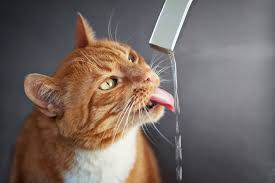 Grooming is another way to help keep your cat healthier. Cats are often proud self-groomers, but you should be assisting by brushing them as often as they will allow, daily if possible. If you can get in to that routine, your cat will look at it as part of your daily bonding time and benefit from a reduction in excess hair and probably less hairballs as well. Additionally, it's important to have that ability to observe and be in contact with your cat's entire body so that you can notice any changes that may have occurred.
Grooming is another way to help keep your cat healthier. Cats are often proud self-groomers, but you should be assisting by brushing them as often as they will allow, daily if possible. If you can get in to that routine, your cat will look at it as part of your daily bonding time and benefit from a reduction in excess hair and probably less hairballs as well. Additionally, it's important to have that ability to observe and be in contact with your cat's entire body so that you can notice any changes that may have occurred.
One of my more favorite ways to a healthy cat is engaging the Natural Cat. What I mean by that is engaging them to indulge their natural instincts of hunting and giving them a reason to get up and get active physically and mentally. Toys, challenges, climbing areas and more give them a chance to engage their natural instincts, while keeping them satisfied in their non-natural indoor existence. It's fine to let them sleep, but that must be followed up with some bursts of activity to keep them healthy overall.
 Finally, create stress-free places for them. Give them places to remove themselves to when they are nervous. When you are engaging them be cognizant of their reactions, are they playful or agitated? Keep your energy around them consistent and predictable. Stress can lead to a wide variety of problems that unfortunately lead to even bigger problems.
Finally, create stress-free places for them. Give them places to remove themselves to when they are nervous. When you are engaging them be cognizant of their reactions, are they playful or agitated? Keep your energy around them consistent and predictable. Stress can lead to a wide variety of problems that unfortunately lead to even bigger problems.
Cats are majestic beings who deserve the best that their owners can give them, but in a healthy way that promotes healthy outcomes.
Share your ways to a healthier cat on our Animal Radio Facebook Page.
Visit Website
The Dogfather's Grooming Tip with Joey Villani
Mud Baths for Dogs
 Joey recently returned from the Groom Expo West Conference in Pasadena, California. He explains that when he attends these conferences, he gets to see the latest and greatest new pet products, and this conference was no different!
Joey recently returned from the Groom Expo West Conference in Pasadena, California. He explains that when he attends these conferences, he gets to see the latest and greatest new pet products, and this conference was no different!
The newest thing in the pet industry is the introduction of, believe it or not, mud baths for dogs. This is not just a gimmick, as mud bath for dogs can remove impurities from their skin, just like it does with people.
All dogs, even though it is more common in the hairless dogs, get blackheads. Mot dogs get them on their chins, but on a hairless dog, you will see them all over their body. A mud bath can remove these from your pet.
You just apply a mud treatment, let it sit on their skin and wipe off as much as you can, and then do a final rinse. This will pull out the impurities and pull out the blackheads, cleaning their skin making their coat and skin look and feel better. But just like in humans, when you open up the pores and pull stuff out, you need to close it. So just make sure that you follow it up with a conditioning treatment.
Joey has seen great results from this and states it is a great add-on for grooming salons and something you might want to treat your dog to.
So can you just go grab some mud from your backyard or does it have to be special mud? Joeys explains that it is a special mud that contains clay, so see your professional groomer if you are considering this for your pet.
Animal Radio News - Lori Brooks
 Do Pets Grieve For Other Pets?
Do Pets Grieve For Other Pets?
The impact of the loss of a pet in some people is as great as the loss of a human. Many people go through the same grieving process when a pet is gone as they do upon losing a human family member. However, research documenting the impact other pets experience when a companion animal dies is at last being studied. To understand if pets experienced grief, the authors of this study compiled a questionnaire that was distributed to pet parents through vet clinics in Australia and New Zealand. They had to have lost a pet within the past five years and had up to two remaining animals. In dogs, following the loss of a companion, owners reported changes in affectionate behavior, which were common with 26-percent being clingy/needy and 10-percent seeking less affection. Around 30-percent of dogs were reported to seek out and spend more time at the deceased's favorite spot. Close to 30-percent of dogs slept more. A third of dogs were reported to eat less and at a slower rate than they had before the loss. For most dogs, these behavioral changes resolved in two to six months. For cats, the loss of a companion resulted in 40-percent demanding more affection. Thirty-six-percent of cats sought out the deceased favorite spot. Almost half of the cats had a change in vocalization behavior with a 43-percent increase in frequency and a 32-percent increase in the volume. All of these changes in dogs and cats lasted between two to six months. An interesting finding was in the small number of pets who had lost a four-legged family member of a different species, as in a dog losing its cat friend. They manifested similar behavioral changes as when the loss was of the same species. Now this is fascinating: Many pet parents wonder if the remaining pets should view the body of the deceased pet friend. In this study, 58-percent of dogs and 42-percent of cats viewed their deceased companion. There was no difference in behaviors noted between those that viewed the deceased and those that did not. This is certainly not an in-depth study. How do we know if the humans were not assuming the emotions they were feeling, were also being shared by their pets? Or, were the pets acting differently because their human parents were and the animals were not really grieving at all? The authors agree that further study is needed to definitively determine if and how our pets grieve.
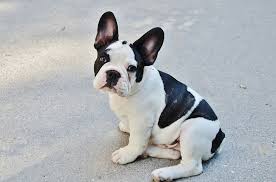 Labrador No Longer "Top Dog"
Labrador No Longer "Top Dog"
The Labrador is no longer the top dog in Britain; it's now The French Bulldog, which is a celebrity favorite for the Beckhams and Lady Gaga. It will be the first time the Labrador Retriever will have been knocked off the top spot in 27 years. The Lab has been the most popular dog breed in the UK since 1990, the year it overtook the Yorkshire Terrier.
Tax Credit for Pet Adoption
A bill introduced in the Oregon Senate would allow a tax credit of up to $100 for someone who adopts a dog or cat from an animal rescue facility. Senate Bill 326 would provide a credit for qualified adoption expenses, including adoption fees, vaccinations, spaying or neutering and microchipping. One of the authors of the bill, which is still being crafted, said giving someone a tax return of up to $100 is the least Oregon can do to reward someone who's rescued a pet. Opponents of the proposal say, "SB 326 asks you to create a new tax credit, despite the fact that the state has a current budget shortfall of $1.8 billion dollars."
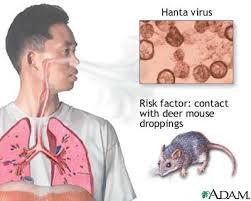 Infected Pet Rats May Be Confiscated
Infected Pet Rats May Be Confiscated
There's fear and panic sweeping through communities of people who own pet rats after reports and rumors began circulating on rat forums, blogs and websites, that their pets might be confiscated and killed. The reason for the concern is the Seoul virus, a type of Hantavirus that can be transmitted from pet rats to humans. The outbreak first came to attention in December and is believed to have started in Illinois and Wisconsin when a woman who breeds pet rats became ill and was hospitalized. Doctors there notified the Centers For Disease Control and Prevention (CDC), which traced the virus to two rat breeders in Illinois, both of whom had sold rats to the woman. Since then, a rat in a Pennsylvania home-breeding facility has tested positive for the Seoul virus, which by the way, cannot pass from person to person. A human gets it from an infected rat. Symptoms for people are similar to the flu and may include fever, severe headache, back and abdominal pain, chills, blurred vision, redness of the eyes or rash. Still, humans can show no signs of Seoul virus but still test positive for antibodies to it. Infected rats do not become sick, but can shed the virus through urine, feces and saliva for many months. It is mostly brown rats and Norway rats that are susceptible. If you have pet rats, be careful to follow the CDC's precautions, such as washing hands after handling the rats and keeping cages, bedding and toys away from areas where food is served or people bathe.
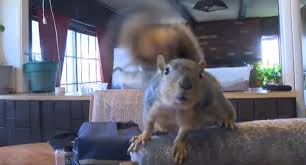 Pet Squirrel Attacks Burglar
Pet Squirrel Attacks Burglar
A burglar who broke into an Idaho man's house probably would have picked a different house had he known he would have to deal with the loyal pet squirrel who also lived there. Here's what happened. The homeowner came home one day earlier this month and found doors opened and scratches on his gun case. A few small items were missing, so he called the police who came out to take a report. The officer met Joey the pet squirrel and she asked the owner if Joey would bite. The owner said Joey normally did not bite, but he couldn't rule it out. The police officer left the home and returned a few hours later with some of the stolen merchandise. When questioning the suspect, the policewoman noticed he had scratches on his hand and asked if he got them from a squirrel. The suspect said the squirrel wouldn't stop attacking him until he left the house. So now Joey is a local hero, basking in his glory and enjoying his favorite treat - Whoppers Malted Milk Balls candy.
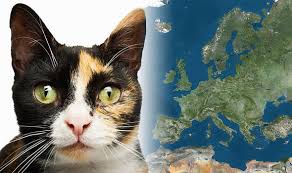 Cat Found 6 Months Later and 600 Miles From Home
Cat Found 6 Months Later and 600 Miles From Home
Six months after her cat Pepper ran away, a woman in the Netherlands is looking forward to a reunion in an Austrian village nearly 600 miles away. Luckily Pepper was micro chipped, and thanks to a Good Samaritan who found her and thought she was an underweight stray, Pepper is going back home soon. No one has any clue as to how Pepper got so far away, but some guess that she hitch-hiked on the back of a truck.
 Listen to the entire Podcast of this show (#1059)
Listen to the entire Podcast of this show (#1059)





